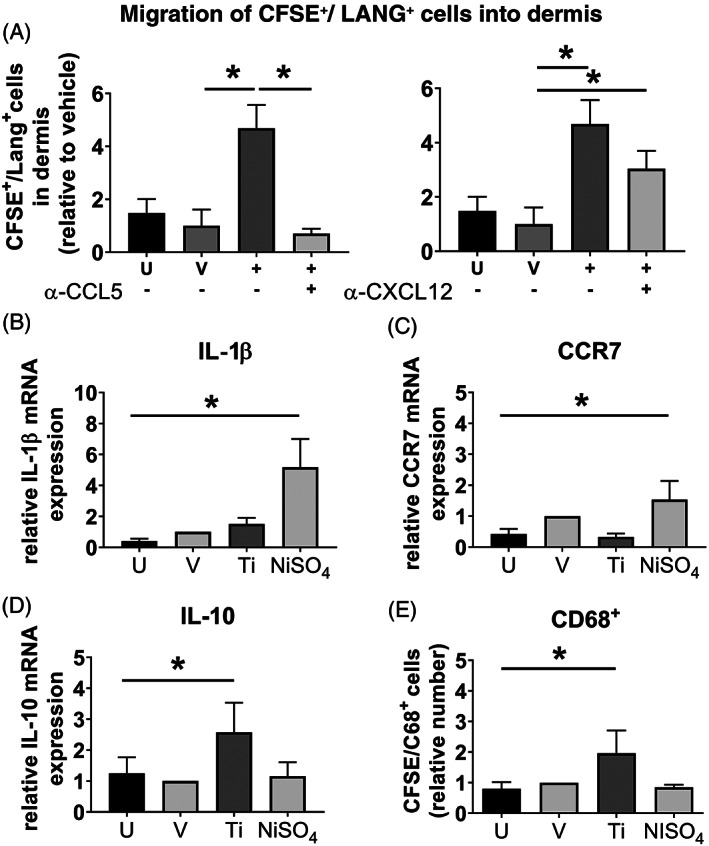FIGURE 4.

RHS dermis is CD68+/IL‐10high/CCR7low/IL‐1βlow after CCL5‐dependent MUTZ‐LC migration. RHS‐LCs were unexposed (U), exposed to H2O vehicle (V), 170 mM TiALH (+), or NiSO4 (10 mM) for 24 hours. (A) Chemical exposure was performed in the presence of neutralizing antibodies to CXCL12 (+) or CCL5 (+) or IgG1 isotype control (−). CFSE/Langerin‐APC fluorescence intensity of MUTZ‐LCs in the dermis was quantified using the CellQuest Pro FACS analysis software. Real time‐polymerase chain reaction shows increased (B) IL‐1β and (C) CCR7 mRNA after NiSO4 exposure, but not after titanium(IV) bis(ammonium lactato)dihydroxide exposure and (D) increased IL‐10 mRNA after exposure to titanium(IV) bis(ammonium lactato)dihydroxide but not after exposure to NiSO4. (E) Increased numbers of viable CD68+ cells (flow cytometry) in RHS‐LC dermis after exposure to titanium(IV) bis(ammonium lactato)dihydroxide but not after exposure to NiSO4. Data represent the average of four individual experiments performed in duplicate ± SEM. *P < .05 calculated using the Mann‐Whitney U test. CFSE, carboxyfluorescein succinimidyl ester; FACS, fluorescence‐activated cell sorting; Ig, immunoglobulin; IL, interleukin; LC, Langerhans cell; mRNA, messenger RNA; NiSO4, nickel sulfate; RHS, reconstructed human skin; SEM, standard error of the mean
